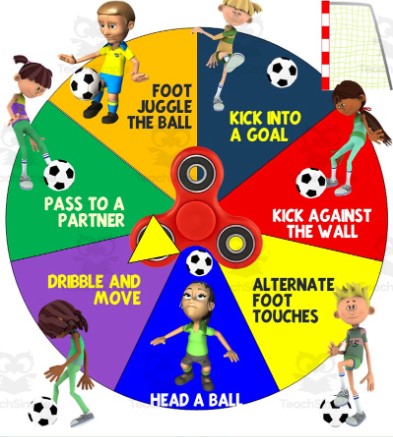بندری شهنی، حدیث (1398)، رابطه توانمندیهای منشی با رضایت زناشویی، افسردگی و پرخاشگری در زنان متأهل دانشجو، پایاننامه کارشناسی ارشد، مؤسسه آموزش عالی علوم و فناوری سپاهان.
جباری، مهسا، شهیدی، شهریار، پناغی، لیلی و مظاهری، محمدعلی (1398)، مطالعه کیفی تعریف توانمندیهای منشی نوجوانان در جامعهی ایرانی، دوره سیزدهم، شماره 2، ص 80-64.
جباری، مهسا، شهیدی، شهریار، پناغی، لیلی و مظاهری، محمدعلی (1400)، توانمندیهای منشی نوجوانان ایرانی، فصلنامه علمی پژوهشی روانشناسی کاربردی، دوره پانزدهم، شماره 3، پیاپی 59، ص 380-355.
خدایاریفرد، محمد، حجازی، الهه، حسنیراد، مرجان و مک گرث، رابرت (1399)، ساخت و رواسازی پرسشنامه توانمندیهای منش ایرانیان، فصلنامه اندازهگیری تربیتی، دوره دهم، شماره 40، ص 85-55.
خسروجردی، زهرا، حیدری، محمود، قنبری، سعید و پاکدامن، شهلا (1399)، تدوین مدل تبحرمداری مبتنی بر توانمندیهای منش در نوجوانان، پژوهشنامه روانشناسی مثبت، دوره پنجم، شماره 4، پیاپی 20، ص 92-77.
محمودی، زهرا، جعفری، فروغ، زهراکار، کیانوش و ذبیحی، رزیتا (1399)، طراحی مدل شکوفایی دختران بر اساس توانمندیهای منشی مادران با نقش میانجی شیوههای فرزندپروری، فصلنامه تعالی مشاوره و رواندرمانی، دوره نهم، شماره 36، ص 11-1.
Akar, H. Dogan, Y.B. and Ustuner, M. (2018). The relationship between positive and negative perfectionisms, self-handicapping, self-efficacy and academic achievement. European Journal of contemporary Education. 7(1): p 7-20. DOI: 10.13187/ejced.2018.1.7.
Amonoo HL, Barclay ME, ElJawahri A, Traeger LN, Lee SJ, Huffman JC, (2019). Positive
Psychological Constructs and Health Outcomes in Hematopoietic Stemnations adults, Journal CanadianMedical Association,182(3): 246-256.
Antony, J. (2016). Academic self-efficacy and self-handicapping: are they influenced by self-regulated learning?. Journal of Research: The Bede Athenaeum, 7(1), 15-22.
Azeem, K., & Zubair, A. (2021). Role of academic self-handicapping and self-regulated learning strategies in mastery goal orientation among adolescents. FWU Journal of Social Sciences, 15(2), 152-172.
Berglas, S. and Jones, E. E. (1978). Drug choice as a self-handicapping strategy in
response to no- contingent success. Journal of personality and social psychology, 36(4): 405-417.
Blanca, M. J., Ferragut, M., Ortiz-Tallo, M. & Bendayan, R. (2018). Life
satisfaction and character strengths in Spanish early adolescents. Journal of Happiness Studies. 19(5), 1247-1260. [Link]پ
Braasch. L, G, Braten. I, Stromso. H, & Anmarkrud. O. (2014). Incermental theories of intelligence predict multiple document comprehension, Learning and Individual Differences, 31. 11-20.
Duckworth, A.L., Steen, T.A. & Seligman, M.E.P. (2015). Positive Psychology in Clinical Practice. Annual Review of Clinical Psychology, Vol. 1, No. 1: 629-651
Eissa saad, Mourad Ali (2020). Self-Regulated Learning and Academic Procrastination as Predictors of Smartphone Addiction among Second Year-Middle School Learning Disabled Students, Vol. 9 Núm. 26 / Febrero 2020
Eryucel, S. (2018). Self-Handicapping and spiritual wellbeing. Journal of International Social Research. V 11. Issue 59. P. 661-670.
Eyink, J., Hirt, E. R., Hendrix, K. S., & Galante, E. (2017). Circadian variations in claimed self-handicapping: exploring the strategic use of stress as an excuse. Journal of Experimental Social Psychology, 69, 102-110.
Falconer, A. A., & Djokic, B. B. (2019). Factors affecting academic self-efficacy and academic self-handicapping behaviors in doctoral students. International Journal of Doctoral Studies, 14, 637.
Heintz, S., Kramm, C., & Ruch, W. (2019). A meta-analysis of gender differences in character strengths and age, nation, and measure as moderators. Journal of Positive Psychology, 14(1), I-I. [Link]
Jabbari, M., Shahidi, S., Panaghi, L., Mazaheri, M. A., & Oberle, E. (2021). Examining the link between character strengths and positive and negative mental health indicators in Iranian adolescents. Journal of Psychoeducational Assessment. [Link]
Kabakci, O. F. (2019). Prediction of risky behaviors in adolescents: Effect of
character strengths and being virtuous. European Journal of Educational Research, 8(2), 501-513. [Link]
Kim, H., Lee, K., & Hong, Y. Y. (2012). Claiming the validity of negative in-group stereotypes when foreseeing a challenge: A self-handicapping account. Self and Identity, 11(3), 285-303.
Klingsieck, K. B. (2013) Procrastination: When Good Things Don’t Come to Those Who Wait. European Psychologist, 18, 24-34. http://dx.doi. org/10.1027/1016-9040/a000138.
Lounsbury, J. W. , Fisher, L. A. , Levy, J. J. , & Welsh, D. P. (2009). An investigation of character strengths in relation to the academic success of college students. Individual Differences Research, 7(1), 52-69.
Malin, h. , Liauw, I. , & Damon, W. (2017). Purpose and character development in early adolescence. Youth Adolescence, 46, 1200– 1215.
Martínez-Martí, M. L., & Ruch, W. (2017). Character strengths predict resilience over and above positive affect, self-efficacy, optimism, social support, self-esteem, and life satisfaction, The Journal of Positive Psychology, 12(2), 110-119. [Link]
McCammon, S. L. (2012). Systems of care as asset-building communities:
Implementing strengths-based planning and positive youth development. American Journal of Community Psychology, 49(3-4), 556- 565. [Link]
Niazov Zehava , Meirav Hen , Joseph R Ferrari (2021). Online and Academic Procrastination in Students With Learning Disabilities: The Impact of Academic Stress and Self-Efficacy . Psychol Rep. 2021 Feb
Niemiec, R. M. (2018). Character strengths interventions: A field guide for practitioners. Canada: Hogrefe Publishing. [Link]
Niemiec, R. M. (2013). VIA character strengths: Research and practice (The first 10 years), perspectives on positive psychology, In H. H. Knoop & A. Delle Fave (Eds. ), Well-being and cultures: Perspectives on positive psychology (pp. 11-30). New York: Springer.
Peterson, C., & Seligman, M. E. P. (2004). Character strengths and virtues:
A handbook and classification. Washington, DC: American Psychological Association. [Link]
Plessis, G. A., & de Bruin, G. P. (2015). Using Rasch modelling to examine
the international personality item pool (IPIP) values in action (VIA) measure of character strengths. Journal of Psychology in Africa, 25(6), 512-521. [Link]
Park, N. , & Peterson, C. (2008). The cultivation of character strengths. In M.Ferrari & G. Poworowski (Eds. ), Teaching for wisdom. (pp. 57-75). Mahwah NJ: Erlbaum.
Park, N. , & Peterson, C. (2009). Character strengths: Research and practice. Journal of College and Character, 10 (4), 1-10.
Peterson, C., & Seligman, M. E. (2004). Character strengths and virtues: A handbook and classification (Vol. 1). Oxford University Press.
Proctor, C. , & Linley, P. A. (2013). Research, applications, and interventions for children 13 and adolescents: A positive psychology perspective. New York, NY: Springer
Rashid, T., Anjum, A., Lennox, C., Quinlan, D., Niemiec, R. M., Mayerson, D., & Kazemi, F. (2013). Assessment of character strengths in children and adolescents. In Research, applications, and interventions for children and adolescents (pp. 81-115). Springer, Dordrecht.
Rickert, N. Meras,I & Witkow, M. (2014) Theories of intelligence and students daily Self-handicapping behaviors.Learning and Individual Diffrences, 36. 1-8.
Rozental, A. & Carlbring, P. )2014(. Understanding and Treating Procrastination: A Review of a Common Self-Regulatory Failure. Psychology, 5, 1488-1502. http://dx.doi.org/10.4236/psych.2014.51316
Salmela, M., & Uusiautti, S. (2015). A positive psychological viewpoint for success at school – 10 characteristic strengths of the Finnish high-achieving students. High Ability Studies, 26(1), 117-137. [Link]
Shek, D. T., Dou, D., Zhu, X., & Chai, W. (2019). Positive youth development: current perspectives. Adolescent health, medicine and therapeutics, 10, 131-141. [Link]
Shraw, G.; Wadkins, T. & Olafson, L. (2007) Doing the things we do: A grounded theory of academic procrastination. Journal of Educational Psychology, 99)1(, 12-25.Steel, P. )2007(. Th
Schwinger, M., Wirthwein, L., Lemmer, G., & Steinmayr, R. (2014). Academic self-handicapping and achievement: A metaanalysis. Journal of Educational Psychology, 106(3), 744.
Shankland, R. , & Rosset, E. (2016). Review of brief school-based positive psychological interventions: A Taster for Teachers and Educators. Educational Psychology Review, 27(4), 363-392.
Shek, D. T., Dou, D., Zhu, X., & Chai, W. (2019). Positive youth development: current perspectives. Adolescent health, medicine and therapeutics, 10, 131-141.
Tang, X., Li, Y., Duan, W., Mu, W., & Cheng, X. (2019). Character strengths lead to satisfactory educational outcomes through strength use: A longitudinal analysis. Frontiers in psychology, 10, 1829. [Link]
Török, L., & Szabó, Z. P. (2018). The theory of self-handicapping: forms, influencing factors and measurement. Československá psychologie (Czechoslovak Psychology), 62(2), 173-188.
Tucker-Drob, E. M., Briley, D. A., Engelhardt, L. E., Mann, F. D., & Harden, K. P. (2016). Genetically-mediated associations between measures of childhood character and academic achievement. Journal of personality and social psychology, 111(5), 790.
Wagner, L. , & Ruch, W. (2015). Good character at school: Positive classroom behavior mediates the link between character strengths and school achievement. Frontiers in Psychology, 6(24), 610-621.
Wagner, L., & Gander, F., Proyer, R., & Ruch, W. (2019). Character strengths and PERMA: Investigating the relationships of character strengths with a multidimensional framework of well-being. Applied Research in Quality of Life. [Link]
Wagner, L., & Gander, F., Proyer, R., & Ruch, W. (2019). Character strengths and PERMA: Investigating the relationships of character strengths with a multidimensional framework of well-being. Applied Research in Quality of Life.
Wagner, L., Holenstein, M., Wepf, H., & Ruch, W. (2020). Character strengths are related to students’ achievement, flow experiences, and enjoyment in teacher-centered learning, individual, and group work beyond cognitive ability. Frontiers in Psychology, 11, 1324. [Link]

















